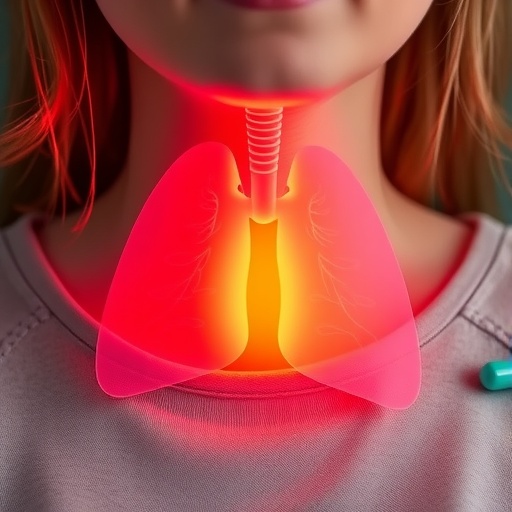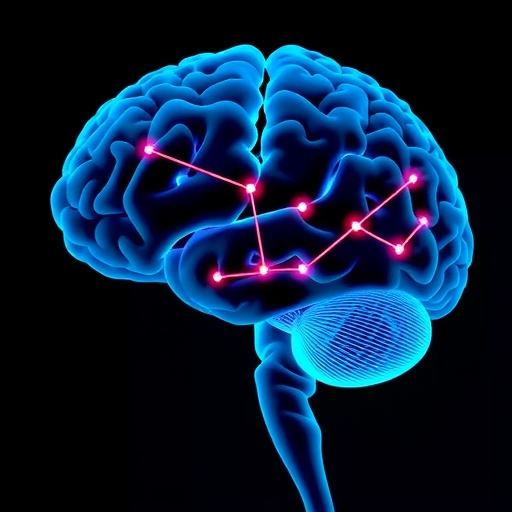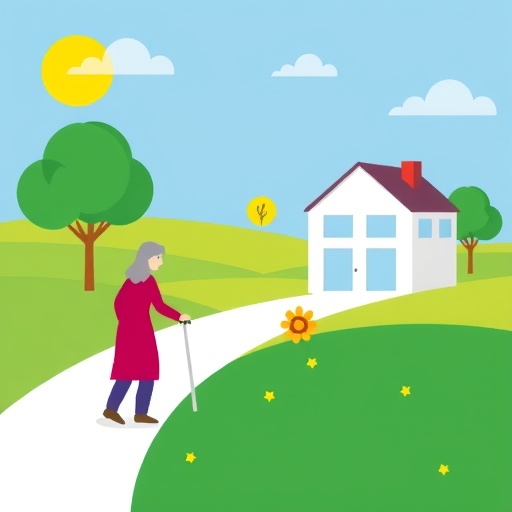In a groundbreaking study published in BMC Health Services Research, the focus is on drug repurposing, particularly examining the economic implications of utilizing mirtazapine for severe breathlessness. The research, which forms part of the multinational BETTER-B trial, aims to address a significant gap in our understanding of how existing medications can be adapted for new therapeutic applications. With a clear unmet need for effective treatments in respiratory distress, this trial shifts the spotlight onto mirtazapine, traditionally used as an antidepressant, showcasing its potential benefits for patients experiencing severe breathlessness.
One of the most striking aspects of this study is its comprehensive approach to economic evaluation. Conducted by a consortium of experts including May, Normand, and Oluyase, this research not only investigates the clinical efficacy of mirtazapine in managing breathlessness but also meticulously assesses the associated costs and potential savings. This dual focus is essential as the healthcare industry faces increasing pressure to reduce expenditures while improving patient care. By presenting a robust economic case for mirtazapine, the study allows policymakers and healthcare providers to make informed decisions about resource allocation.
Mirtazapine’s mechanism of action is multifaceted, primarily working as a noradrenergic and specific serotonergic antidepressant (NaSSA). This unique profile provides a compelling rationale for its evaluation in the context of respiratory distress, given that the medication influences multiple neurotransmitter systems associated with respiratory function. Previous anecdotal evidence and smaller studies hinted at its possible benefits for patients with chronic obstructive pulmonary disease (COPD) and other respiratory ailments. By leveraging these preliminary findings, the BETTER-B trial aims to provide definitive proof of mirtazapine’s efficacy in this new treatment paradigm.
The study’s design exemplifies the rigor necessary for clinical research. By employing a multinational framework, the researchers strive to capture diverse patient demographics and health care systems, enhancing the generalizability of their findings. This approach not only enriches the data set but also ensures that the insights drawn are relevant across various healthcare contexts. The implementation of standardized methodologies across multiple sites strengthens the credibility of the research and its applicability to broader populations.
Economically, the implications of drug repurposing are notable. Traditional drug development processes are time-consuming and prohibitively expensive, often exceeding a billion dollars for a single new medication. In contrast, repurposing existing drugs can significantly reduce both the time and cost associated with bringing a new treatment to market. The BETTER-B trial aims to quantify these economic implications, which could pave the way for more widespread adoption of similar strategies in addressing various health care challenges.
Beyond the economic evaluations, the study emphasizes patient-centered outcomes. In evaluating mirtazapine, the researchers gather data on quality of life, functional status, and patient satisfaction. These indicators are particularly pertinent in managing conditions like severe breathlessness, where traditional clinical endpoints may not fully capture the patient experience. By prioritizing these outcomes, the study aligns with a growing movement within medicine that advocates for a holistic view of health, one that encompasses both clinical effectiveness and the subjective experiences of patients.
A key highlight of the research will be its potential to inform policy decisions regarding the treatment of respiratory distress in various healthcare settings. By presenting compelling evidence that mirtazapine could serve as an effective intervention, the study not only opens the door to new treatment possibilities but also provides a blueprint for how healthcare systems can adapt to meet emerging needs. As healthcare costs continue to rise globally, finding economically viable solutions to critical health challenges becomes increasingly urgent.
Furthermore, as drug repurposing attracts attention globally, the findings from the BETTER-B trial could stimulate further research into other existing medications that may hold promise for treating conditions beyond their original indications. This could lead to a refreshing paradigm shift within pharmacotherapy, where the focus is broadened from developing new drugs to optimizing the use of those already available. Given that many patients are already familiar with the side effects and pharmacokinetics of these medications, repurposing generally entails a shortened timeline for patient access to effective therapies.
In conclusion, the groundbreaking study by May and colleagues offers not just a look at the potential of mirtazapine for treating severe breathlessness but also serves as an illustration of the transformative power of drug repurposing. With its meticulous economic evaluations and patient-centered approach, the BETTER-B trial has the potential to significantly impact clinical practice and policy. Healthcare stakeholders, from researchers to policymakers, will need to keep an eye on these findings, as they may very well reshape our understanding of effective, economical treatment for respiratory distress.
As we await the release of the full results from the BETTER-B trial, the implications of this research cannot be overstated. It underscores the importance of innovation in healthcare and the necessity for a collaborative approach to addressing the diverse challenges faced by patients worldwide. As the medical community continues to explore the vast potential of existing drugs, studies like this will play a vital role in ensuring that effective treatments are both accessible and affordable.
Ultimately, the launch of the BETTER-B trial marks a significant moment in pharmacotherapy and patient care, advocating for a paradigm shift toward embracing drug repurposing as a viable strategy for developing treatments for complex conditions like severe breathlessness. With its economic assessments and patient-focused methodologies, this research provides a comprehensive framework that could influence generations of healthcare professionals and researchers ahead.
Subject of Research: Drug repurposing; mirtazapine for severe breathlessness
Article Title: The cost of drug repurposing: parallel economic evaluation of mirtazapine for severe breathlessness in the multinational BETTER-B trial.
Article References:
May, P., Normand, C., Oluyase, A.O. et al. The cost of drug repurposing: parallel economic evaluation of mirtazapine for severe breathlessness in the multinational BETTER-B trial.
BMC Health Serv Res 25, 1442 (2025). https://doi.org/10.1186/s12913-025-13605-9
Image Credits: AI Generated
DOI: https://doi.org/10.1186/s12913-025-13605-9
Keywords: Drug repurposing, mirtazapine, severe breathlessness, economic evaluation, BETTER-B trial, healthcare innovation, patient-centered outcomes.
Tags: addressing unmet medical needs in respiratory careantidepressants for breathlessness treatmentBETTER-B trial findingsclinical efficacy of mirtazapinecost implications of drug repurposingdrug repurposing for respiratory distresseconomic evaluation of mirtazapineevaluating drug costs in healthcarehealthcare resource allocation decisionsinnovative treatment strategies for respiratory issuesmirtazapine for severe breathlessnessmirtazapine mechanism of action





